917, made for Le Mans
917, made for Le Mans tells the story of an icon, one of the most fantastic machines created to win Le Mans 24 Hours. 50 years after its victory, the 917 has marked the minds of everyone: fans, journalists, historians, pilots ... It is not only the « most sporty car of the century », it has become a work of art, combining performance and aesthetics.
To prolong your immersion, you will be able to observe authentic 917s in an exceptional setting. From the 917 LH from the 1971 2Le Mans 24 Hours to the 917 Comte Rossi homologated for the road, including the only 16-cylinder 917 Spyder, dive into the heart of these models that have marked the spirits.
|
Porsche 917 #917-001 - 1969
This chassis was displayed in long tail form at the Geneva Motor Show for its public unveiling on March 12, 1969. Then presented to the CSI (Commission Sportive Internationale) representatives in Weissach on March 13, 1969. The car's nose and lateral trim tabs were painted green, with three sponsors logos featured on the sides (Shell, Dunlop and Cibié). The roundels usually used for race numbers (on the nose, doors and rear opening hood) featured « 917 ».
|
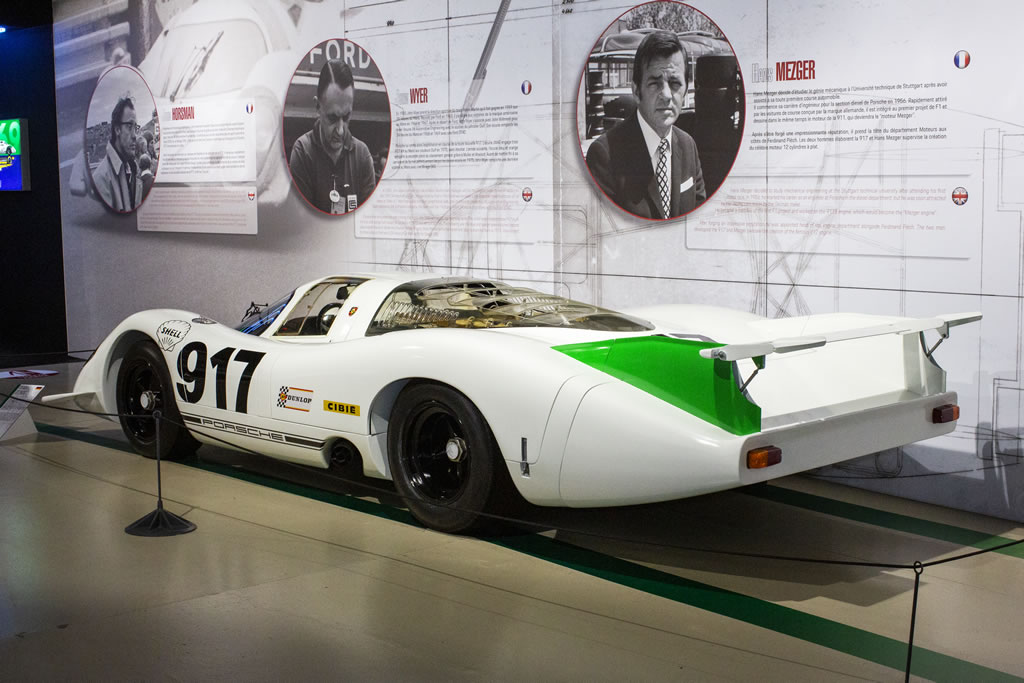
|
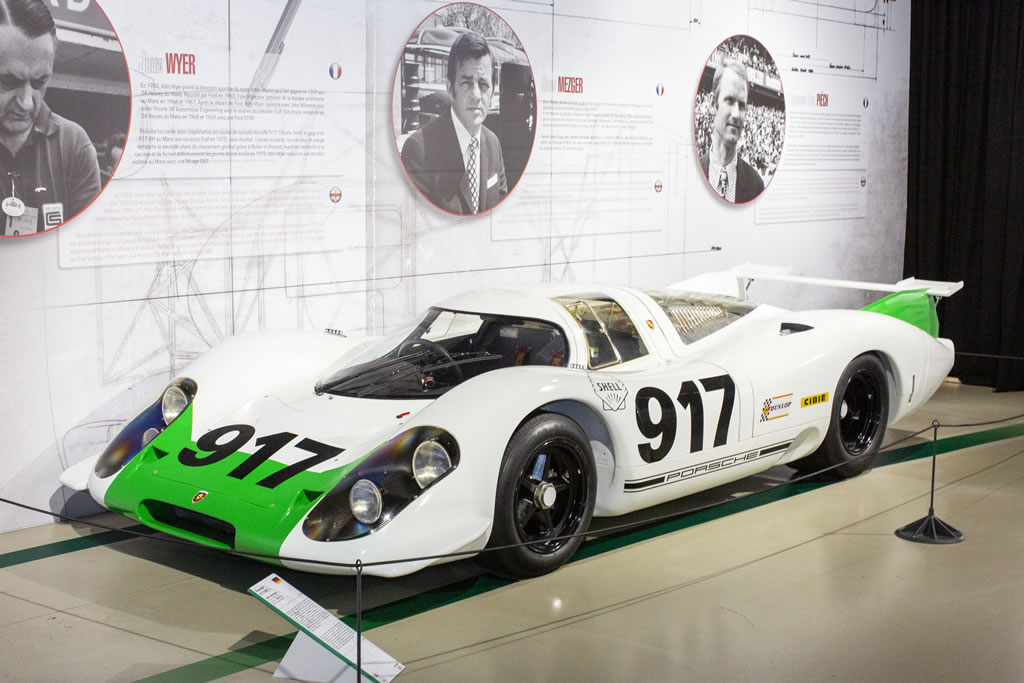
|
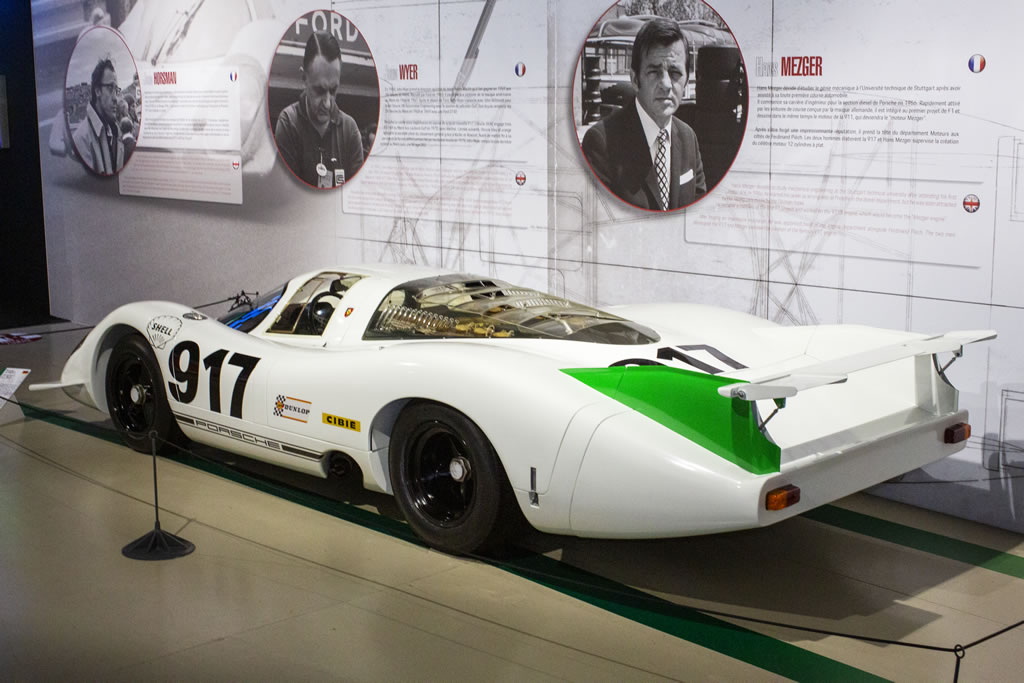
|
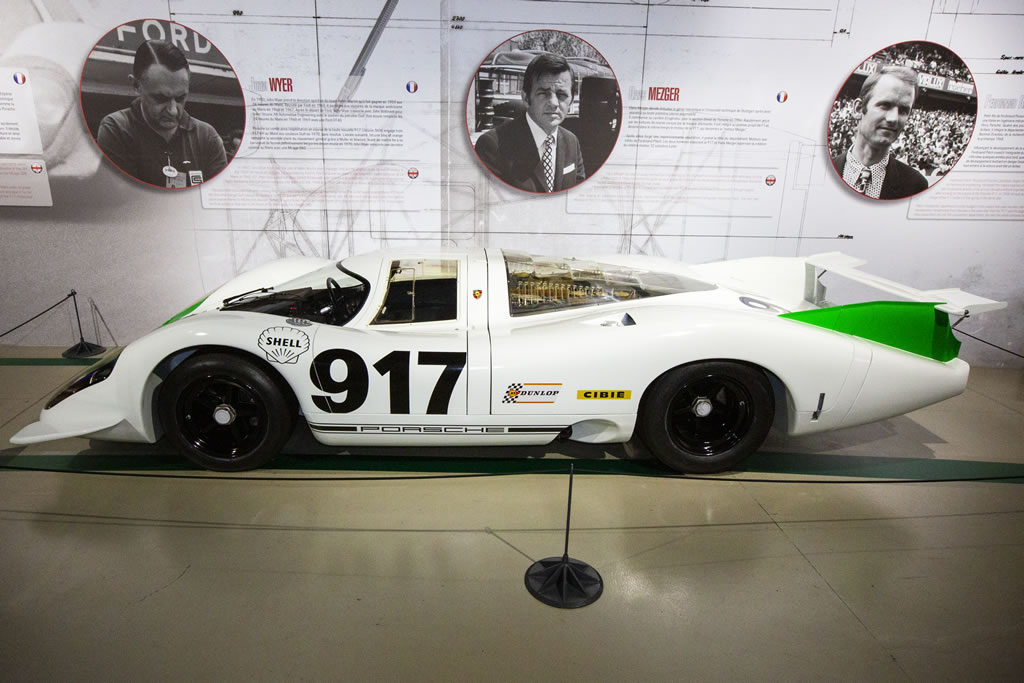
|
Porsche 917 KH #917-015 - 1970 - J.W. Automotive Engineering
Daytona 24 Hours 1970, four Porsche 917s are entered by three teams:
J.W. Automotive Engineering:
- Number 1, the 917 K #917-014 driven by Jo Siffert and Brian Redman, qualified in 2nd position,
- Number 2, the 917 K # 917-015 driven by Pedro Rodriguez and Leo Kinnunen, qualified in 3rd position
Porsche Konstruktionen KG:
- Number 3, the 917 K # 917-011 driven by Kurt Ahrens, Jr. and Vic Elford, qualified in 4th position
Tony Dean:
- Number 52, the 917 K driven by Tony Dean and Peter Gregg, qualified in 15th position
The number 28 Ferrari 512 S (# 1026) driven by Mario Andretti and Arturo Merzario started from pole position but was very quickly overtaken by the two JWA Porsches. Number 2 took the lead in the 3rd hour when number 1 was forced to stop at the pits when the left rear tyre was punctured. Pedro Rodriguez and Leo Kinnunen finally won with 45 laps ahead of their teammates.
|

|

|
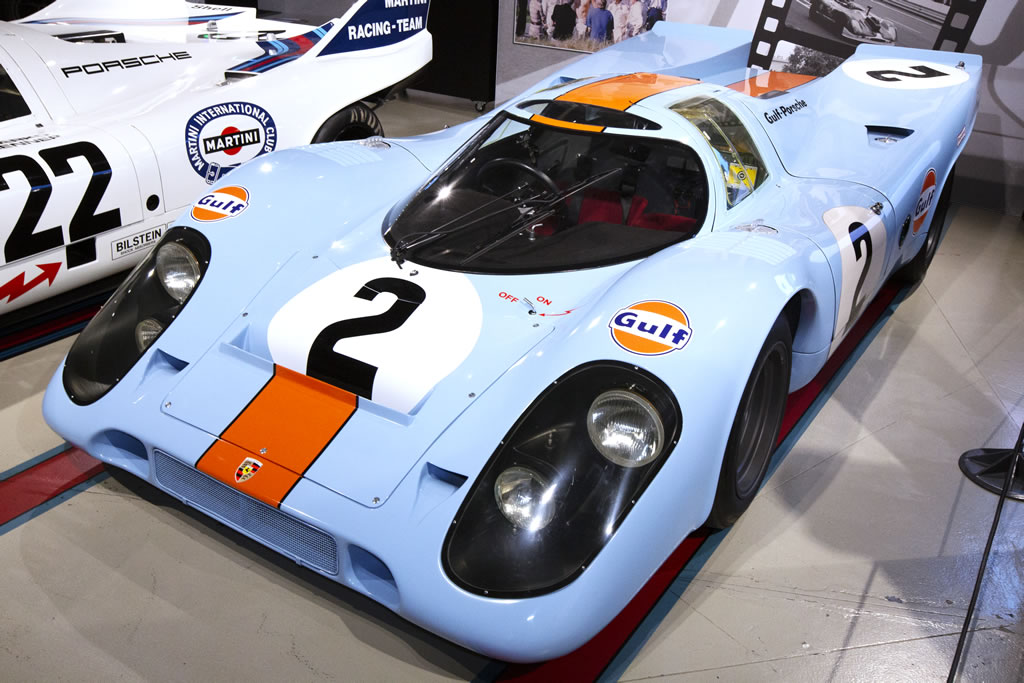
|
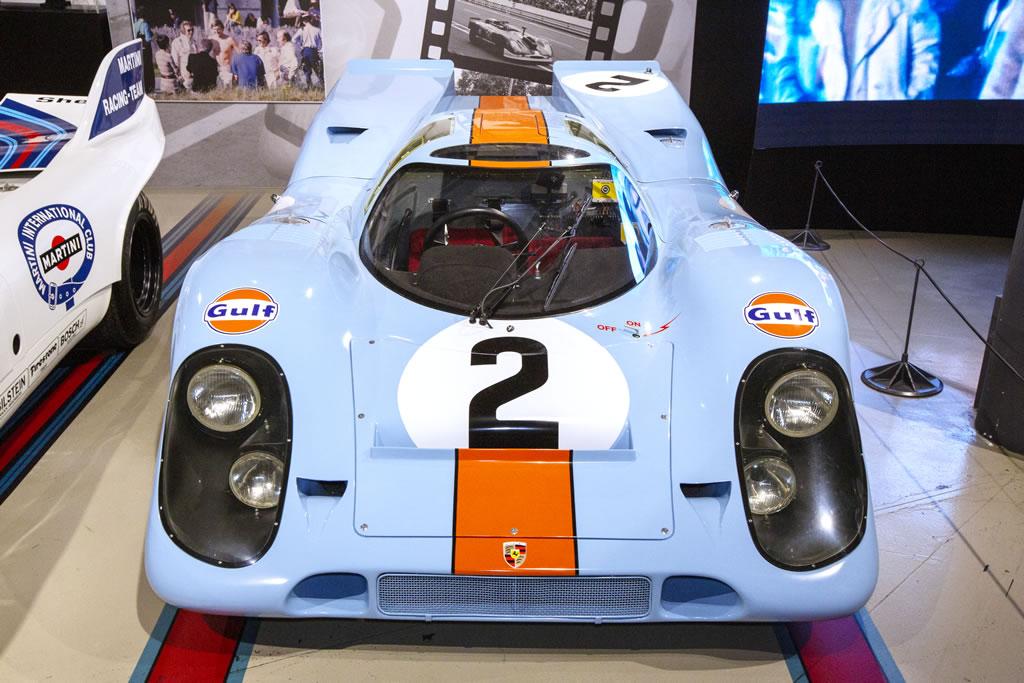
|
Porsche 917 KH Coupé #917-030 - 1971 - Comte Rossi
1000 km of Zeltweg on the Osterreichring on June 27, 1971, three Porsche 917s were entered by two teams:
J.W. Automotive Engineering:
- Number 15, the 917 K # 917-004 driven by Jo Siffert and Derek Bell, qualified in 4th position,
- Number 16, the 917 K # 917-013 driven by Pedro Rodriguez and Richard Attwood, qualified in pole position
Martini International Racing Team:
- Number 28, the 917 K # 917-030 driven by Helmut Marko and Gérard Larrousse, qualified in 3rd position
On the 122nd lap, Larrousse suffered a puncture in a quick turn after the pits and hit the the guard rail, damaging the rear of number 28. He managed to drive back to the pits to but retired because of a broken rear suspension.
Then the car was stored at the Porsche factory, before being converted into a street version for the Count Rossi in 1974. Very few changes were made, with a new exhaust system, mirrors and a leather cockpit.
|
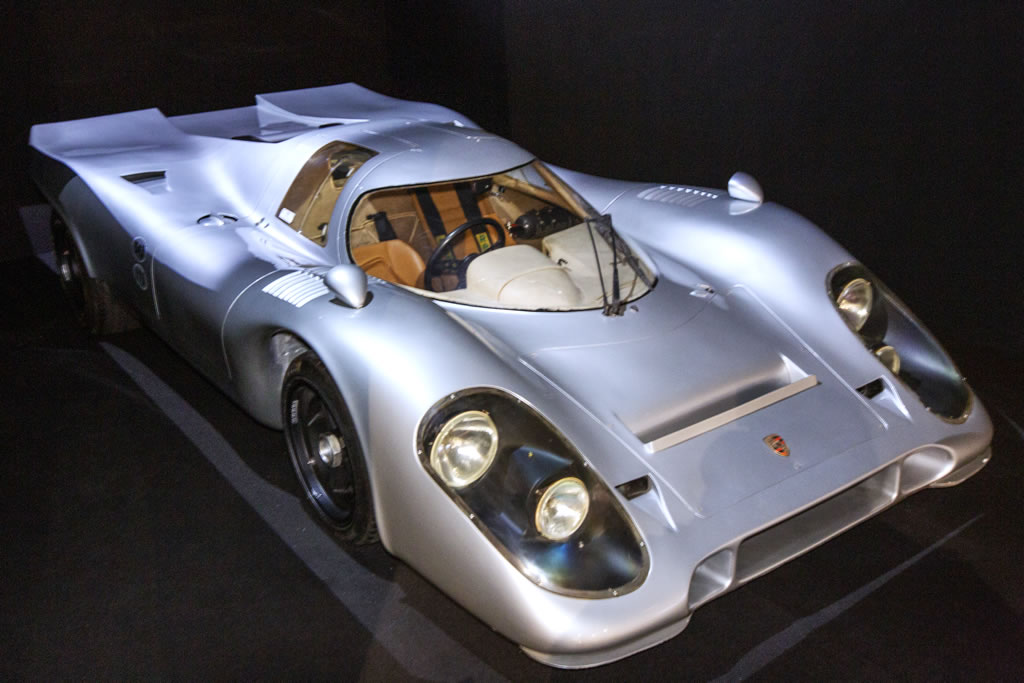
|
Porsche 917 LH #917-045 - 1971 - J.W. Automotive Engineering
Le Mans 24 Hours 1971, for this last year of presence of 5-liter engines, nine Porsche 917s are entered by three teams:
J.W. Automotive Engineering:
- Number 17, the 917 LH # 917-045 driven by Jo Siffert and Derek Bell, qualified in 3rd position,
- Number 18, the 917 LH # 917-043 driven by Pedro Rodriguez and Jackie Oliver, qualified in pole position,
- Number 19, the 917 K # 917-026 driven by Richard Attwood and Herbert Müller, qualified in 11th position
Martini Racing Team:
- Number 21, the 917 LH # 917-042 driven by Gérard Larrousse and Vic Elford, qualified in 2nd position,
- Number 22, the 917 K # 917-053 driven by Helmut Marko and Gijs van Lennep, qualified in 5th position,
- Number 23, the 917/20 # 917-20 / 001 driven by Willy Kauhsen and Reinhold Jöst, qualified in 7th position
Zitro Racing Cars:
- Number 57, the 917 K # 917-025 entrusted to Dominique Martin and Gérard Pillon, qualified in 18th position
Number 17 car driven by Jo Siffert took the race lead in the second hour but an ignition problem caused it to lose three places. They go back to 2nd position in the 6th hour before relapsing to 14th position in the 8th hour. During the night, they went up to 6th position, but an oil leak forced them to retire in the 18th hour.
|
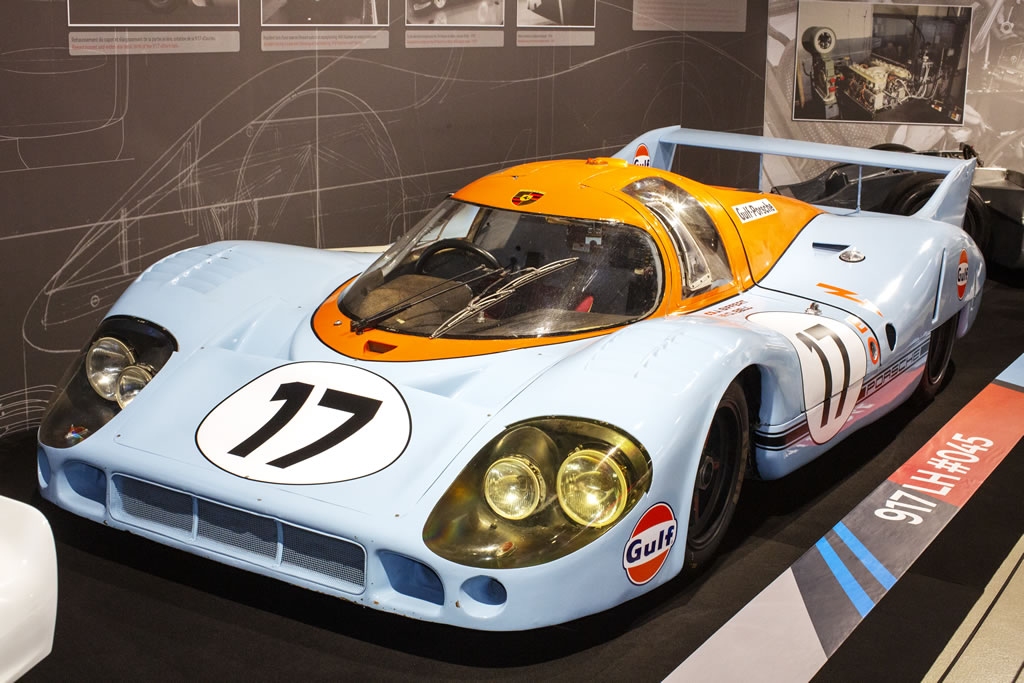
|
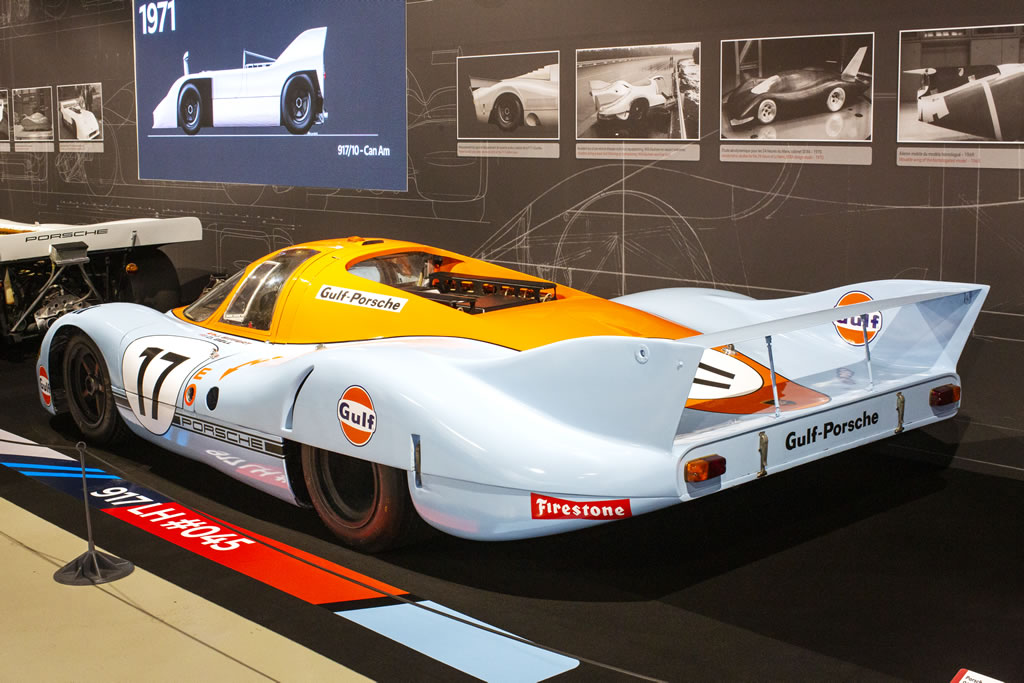
|
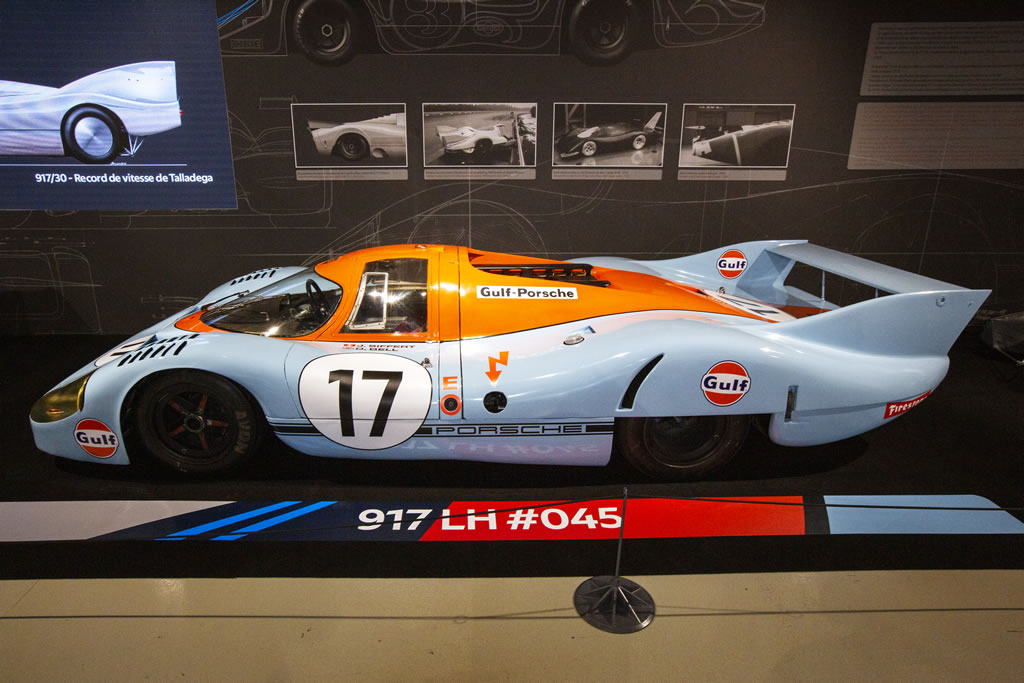
|
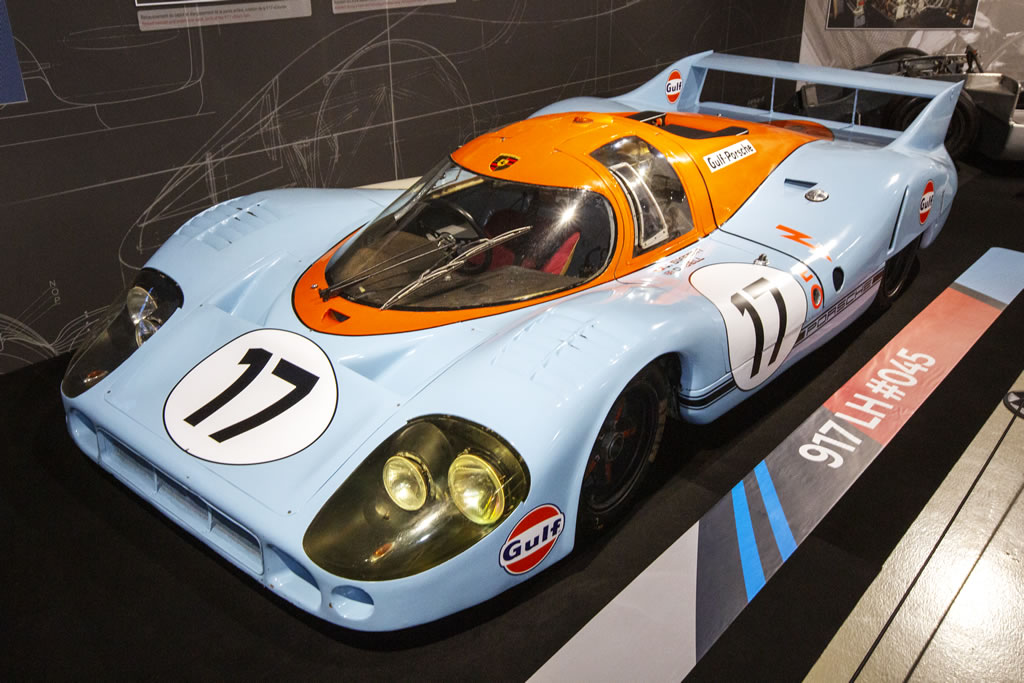
|
Porsche 917 KH Coupé #917-053 - 1971 - Martini Racing
Le Mans 24 Hours 1971, for this last year of presence of 5-liter engines, nine Porsche 917s are entered by three teams:
J.W. Automotive Engineering:
- Number 17, the 917 LH # 917-045 driven by Jo Siffert and Derek Bell, qualified in 3rd position,
- Number 18, the 917 LH # 917-043 driven by Pedro Rodriguez and Jackie Oliver, qualified in pole position,
- Number 19, the 917 K # 917-026 driven by Richard Attwood and Herbert Müller, qualified in 11th position
Martini Racing Team:
- Number 21, the 917 LH # 917-042 driven by Gérard Larrousse and Vic Elford, qualified in 2nd position,
- Number 22, the 917 K # 917-053 driven by Helmut Marko and Gijs van Lennep, qualified in 5th position,
- Number 23, the 917/20 # 917-20 / 001 driven by Willy Kauhsen and Reinhold Jöst, qualified in 7th position
Zitro Racing Cars:
- Number 57, the 917 K # 917-025 entrusted to Dominique Martin and Gérard Pillon, qualified in 18th position
Second magnesium chassis built, the number 22 was delivered to Martini Racing in a white livery. It is not painted in the usual team colors, but just adorned with blue and red facings and Martini Racing-Team stickers.
After a careful start, Helmut Marko was 8th after the 1st hour. A change of alternator belt at the start of the evening brought them down to 9th place then, overnight, a collision with Manfredini's Ferrari 512 M (#1050) damaged the left headlight. They moved up four places in two hours before finding themselves 2nd in the 12th hour following the retirement of the leading cars. They took the lead in the 13th hour with a comfortable lead over their pursuers and won at 222 kph, two laps ahead of number 19 (# 917-026) of Richard Attwood and Herbert Müller.
|
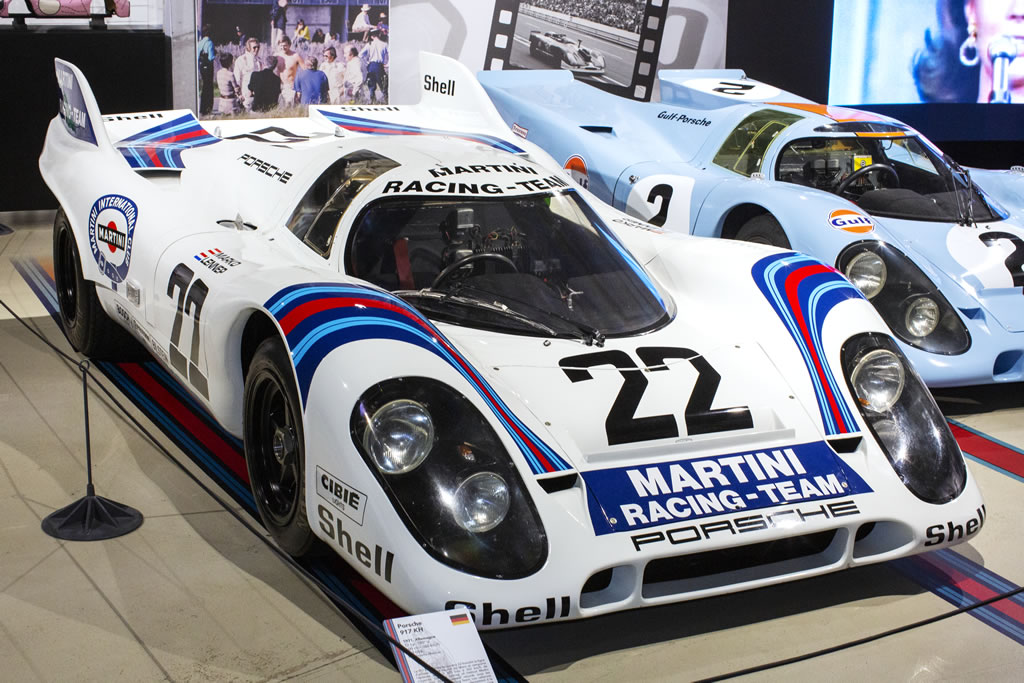
|
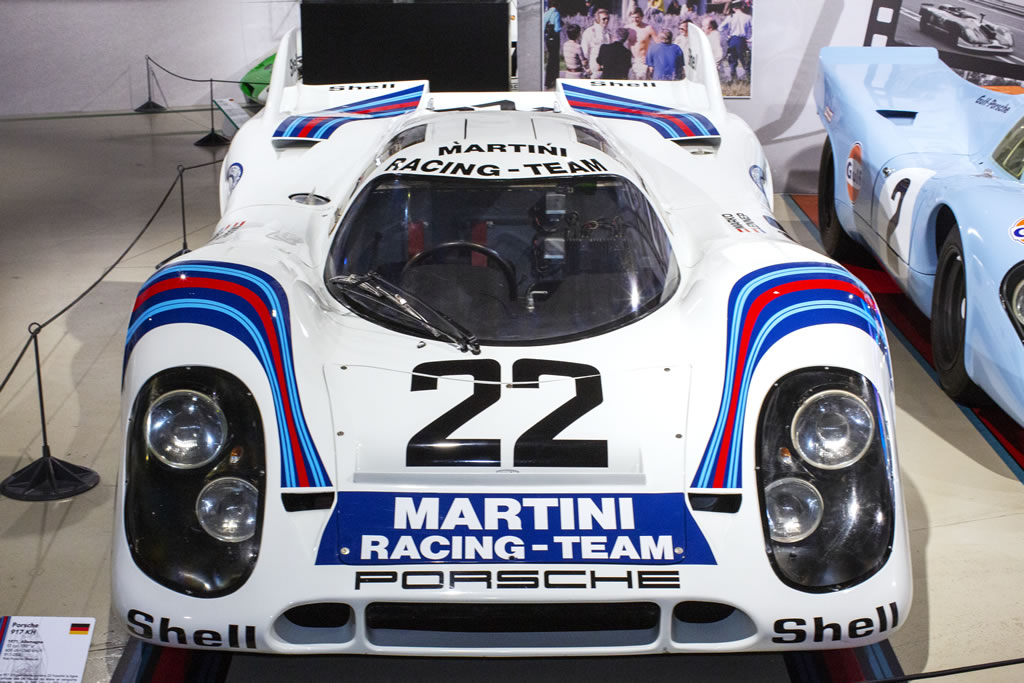
|
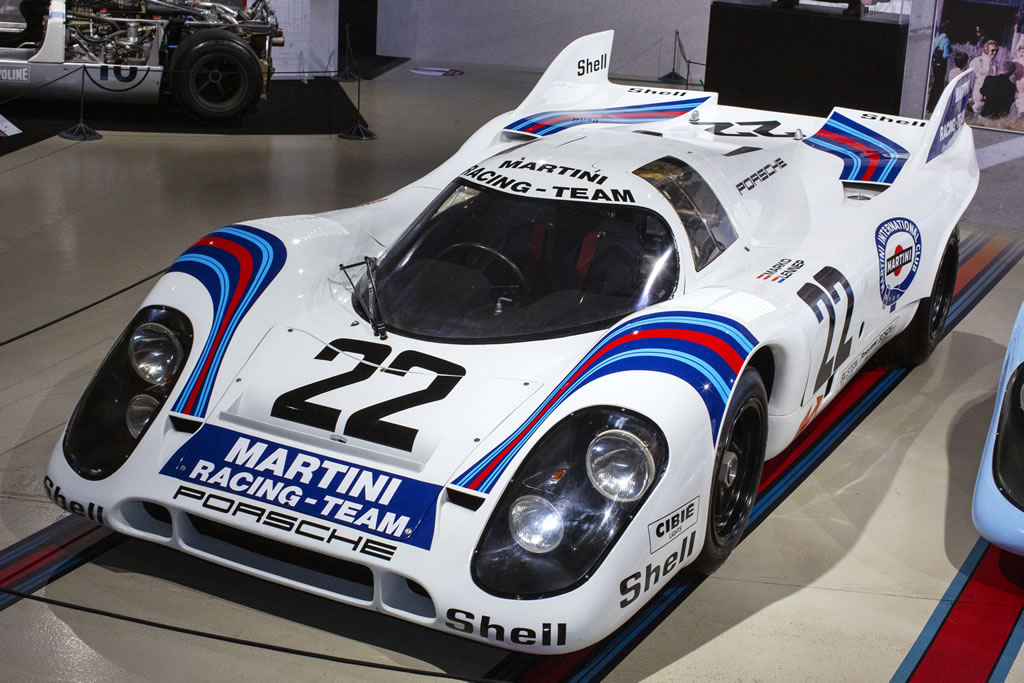
|
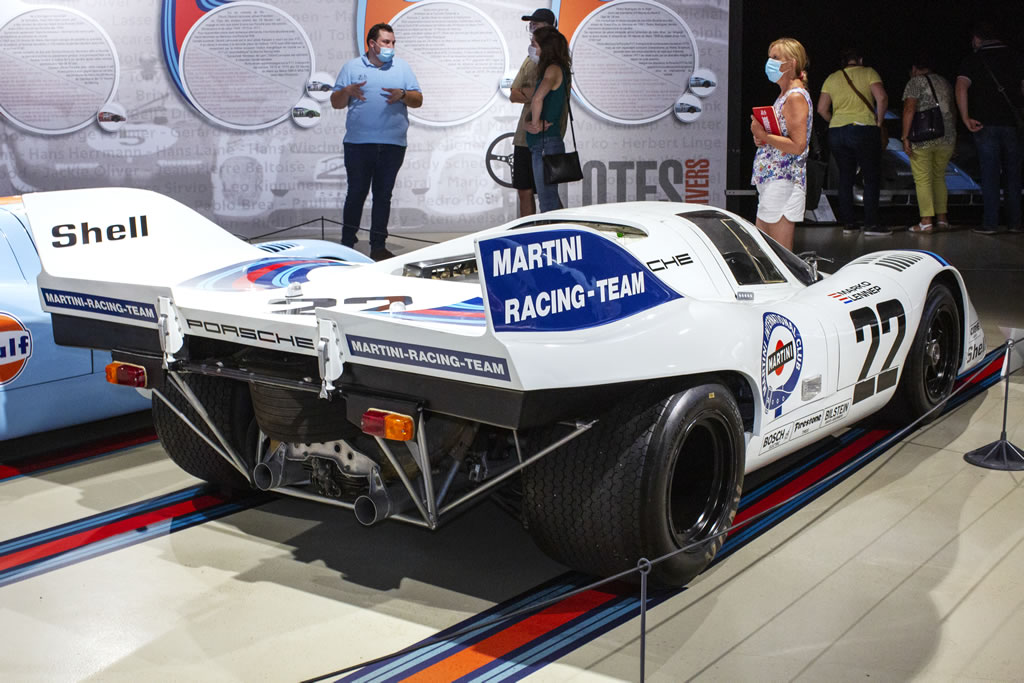
|
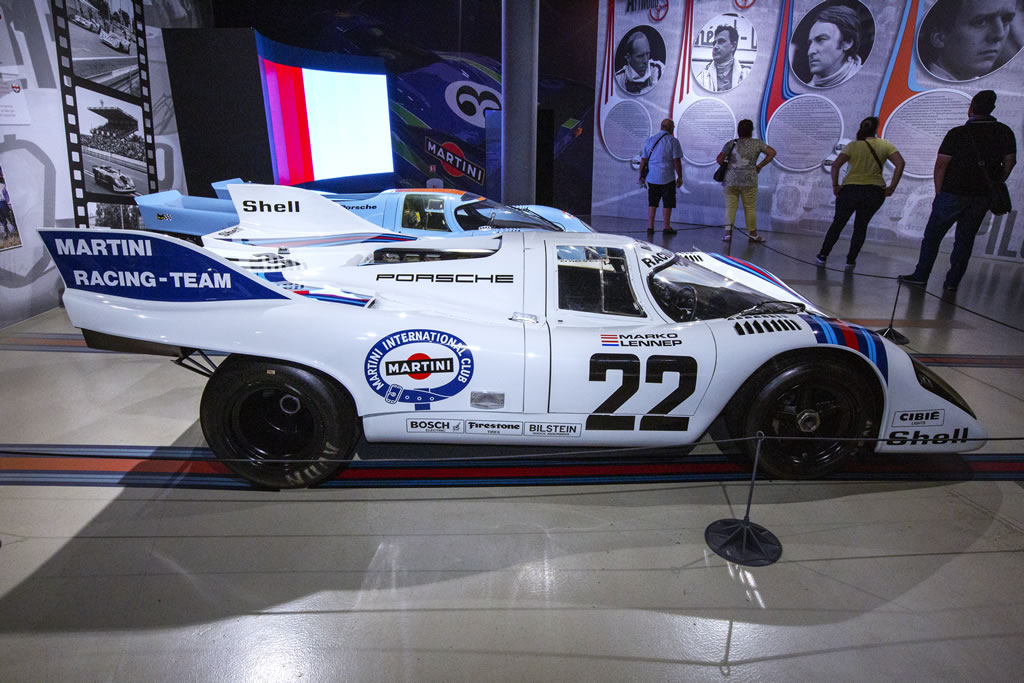
|
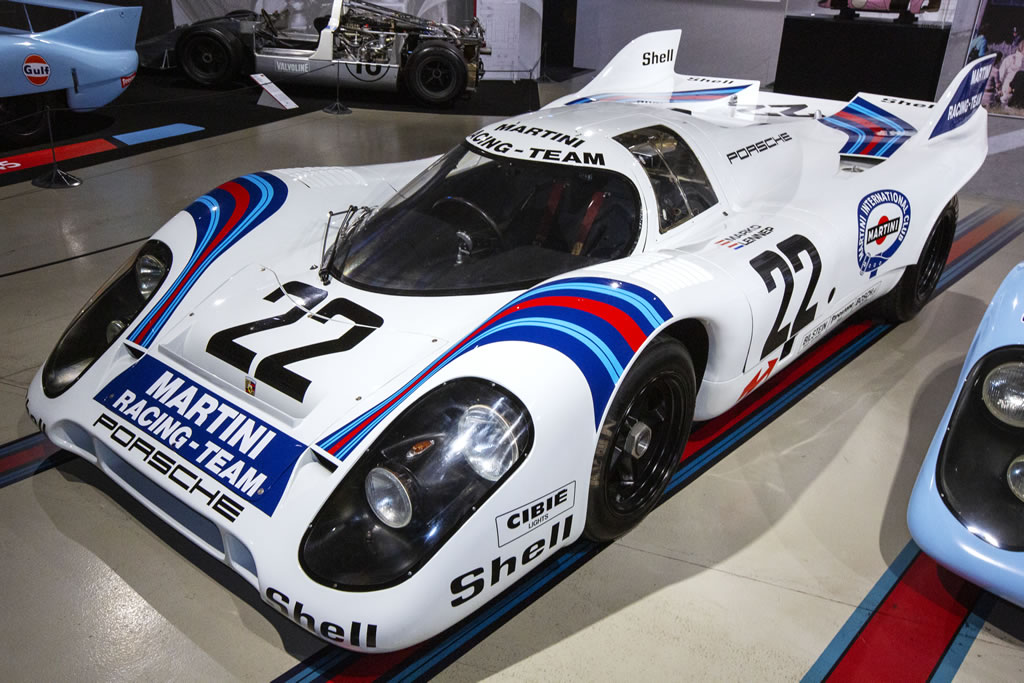
|
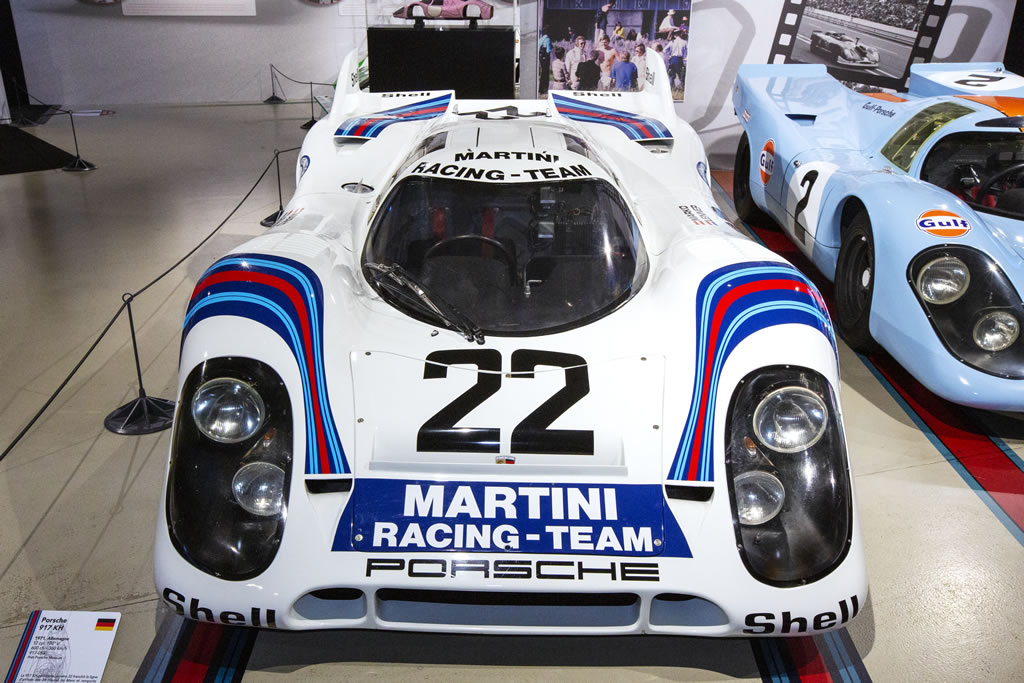
|
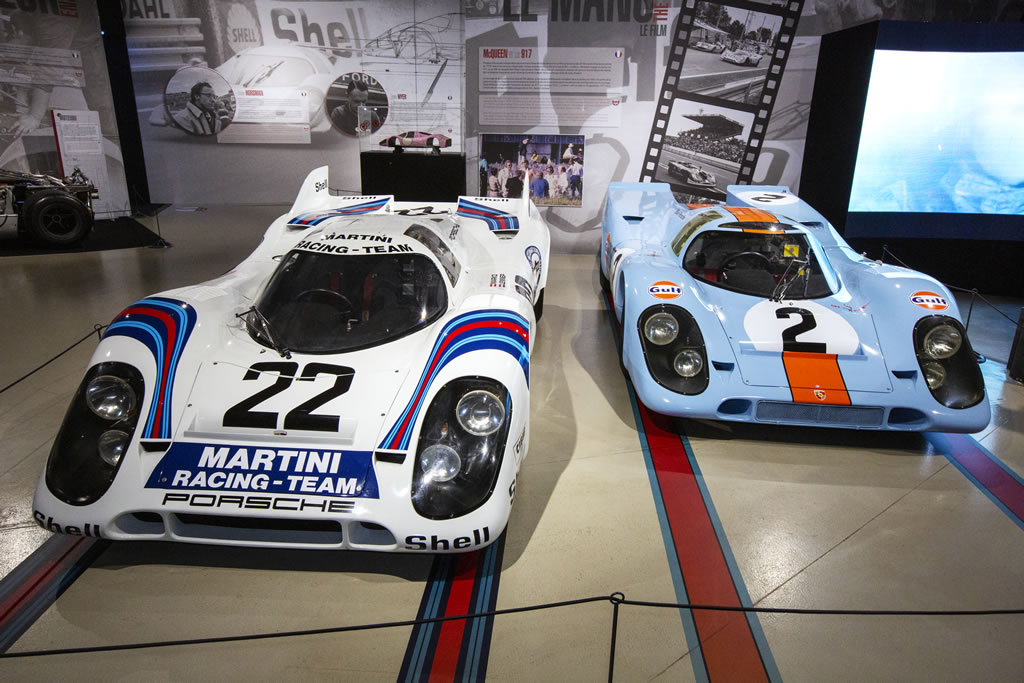
|

|
Porsche 917 PA Spyder 16 cylindres #917-027 - 1969
By 1969, Porsche develops the 917 Spyder with a view to competing in the extremely popular North American racing series, the Canadian American Challenge Cup (Can-Am). Two units featuring 4.5-litre twelve-cylinder naturally aspirated engines are constructed in Zuffenhausen. Jo Siffert takes one (#917-028) to the US to compete in the Can-Am races, ultimately placing fourth overall. #917-027 serves as a test vehicle, becoming famous in 1971 when it is used to test the most powerful naturally aspirated race engine ever built at Porsche: a sixteen-cylinder engine with 6.5-litre displacement and 755 PS, developed at the behest of Ferdinand Piëch.
|
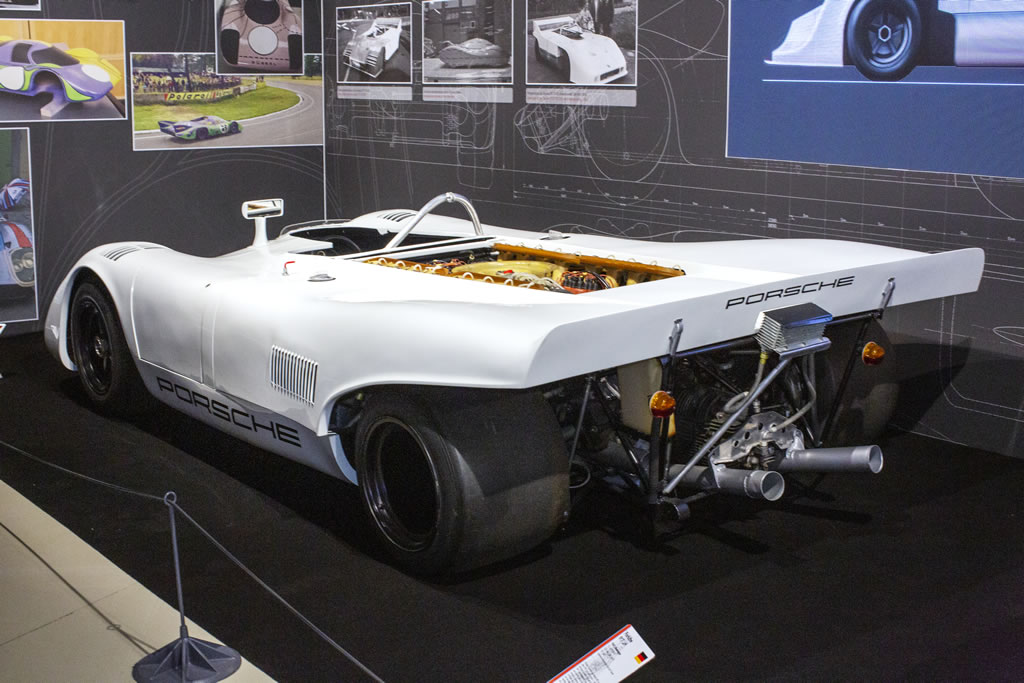
|
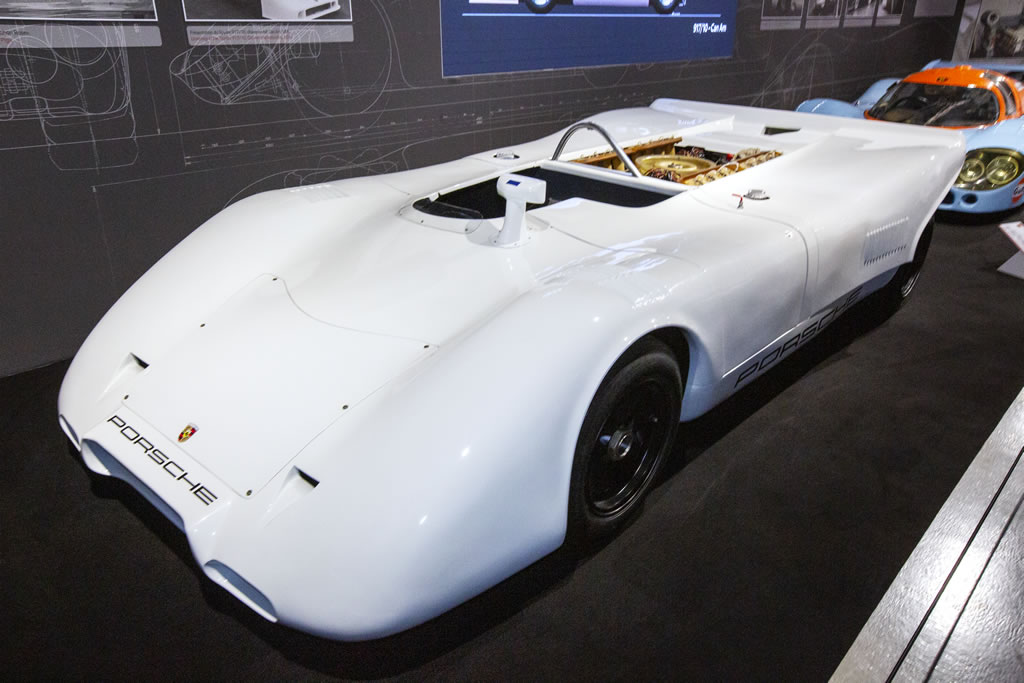
|
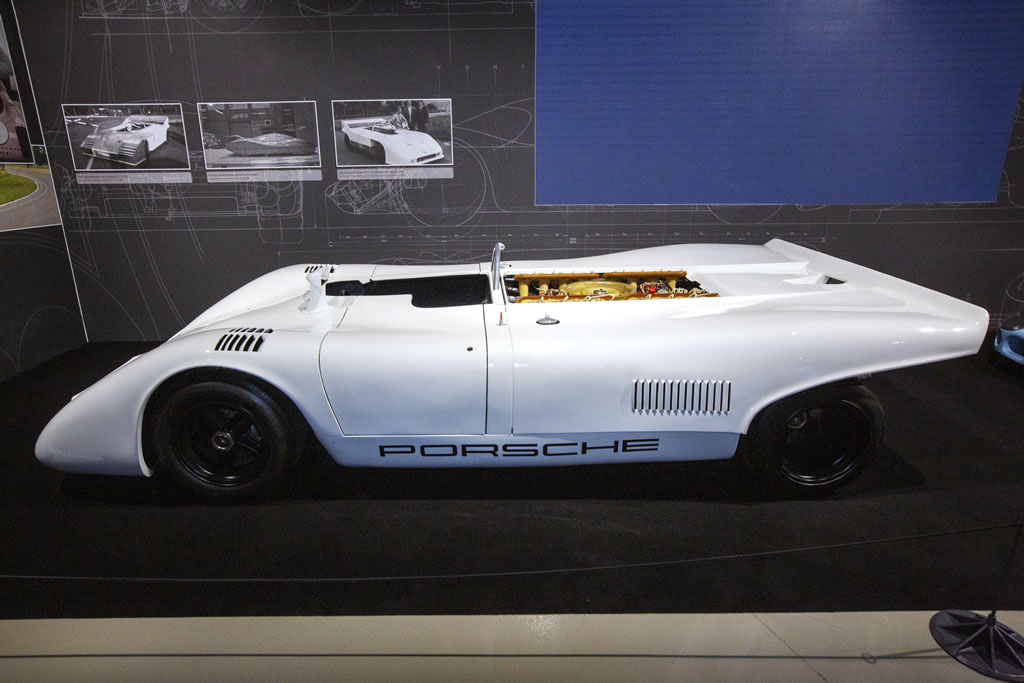
|
Porsche 917/10 TC #917/10-005 - 1972
For the 1971 Can-Am series, Porsche develops an open-top version of the 917, the 917/10. From the 4th round at Watkins Glen, Vasek Polak entered chassis #917/10-002 equipped with a naturally aspirated 5-liter twelve-cylinder engine for Jo Siffert. He occupied 4th position in the championship after his 5th place at Laguna Seca but died driving the Yardley Team BRM F1 P160 #02 at Brands Hatch.
For the 1972 season, Roger Penske entered the Porsche 917/10 TC #011 equipped with a 5-liter twelve-cylinder turbo engine for Mark Donohue. Then from Road Atlanta the Porsche 917/10 TC #003 for George Follmer. For Mark Donohue's return to competition in Donnybrooke, Roger Penske enters the Porsche 917/10 TC #005. Qualified in pole position, he retired after a puncture then won in Edmonton, finished 2nd behind George Follmer at Laguna Seca and finally 3rd at Riverside.
For the 1972 season, Rinzler Motoracing entered the two Porsche 917/10 TC Ex Penske for George Follmer (#003) and Charlie Kemp (#005). Charlie Kemp wins the 1st round at Mosport Park then George Follmer wins at Road Atlanta. But then Mark Donohue in the Porsche 917/30 TC entered by Roger Penske wins the last six races.
|
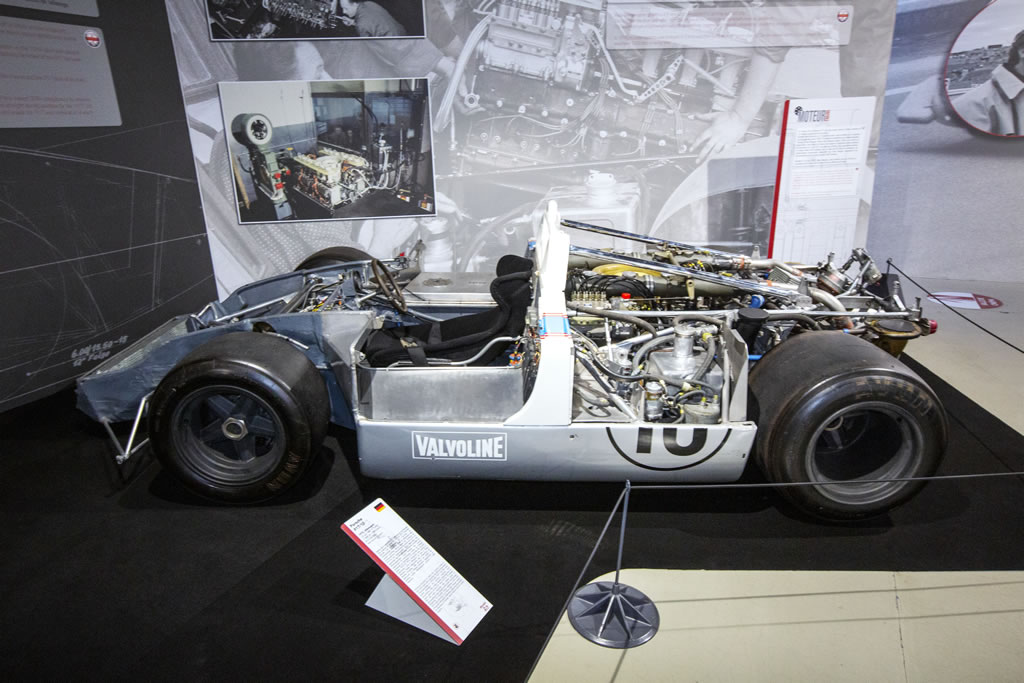
|
|

